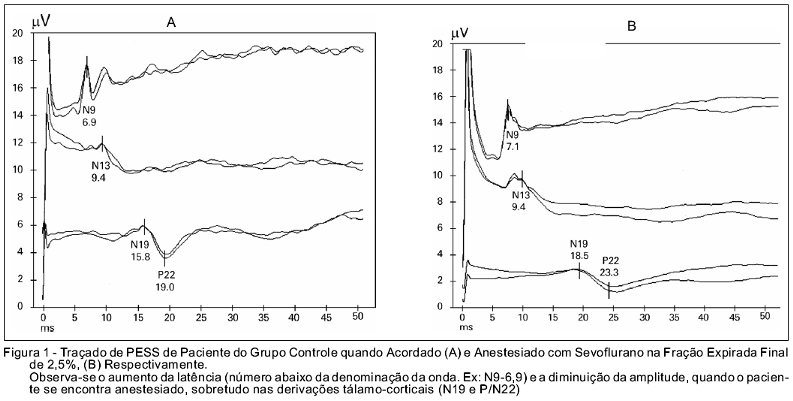BACKGROUND AND OBJECTIVES: There are very few studies on anesthetic drugs pharmacodynamics in patients with Cerebral Palsy (CP). This study aimed at comparing electroneurophysiological responses in healthy and CP patients, using bispectral index (BIS) and short-latency somatosensory evoked potential (SEP) to monitore sevoflurane-induced central nervous system (CNS) electroneurophysiological changes. METHODS: Twenty four patients aged 3 to 18 years, scheduled for surgical procedures were allocated in two groups: 1. CP - 12 patients with spastic CP; 2. Control (C) - 12 patients with no neurological disease. Anesthesia was induced with sevoflurane and 60% N2O in assisted ventilation. BIS and N9, N13, N19 and N/P22 SEP waveforms - amplitude and latency - were recorded at baseline and at 1.2% and 2.5% end-tidal sevoflurane concentration (ETsev), corresponding to 0.5 and 1 MAC, respectively. Monitoring consisted of temperature, ETsev and P ET CO2. For statistical analysis, BIS mean and standard deviation as well as means percentage variation of SEP waveforms latency and amplitude in both anesthetic concentrations, were used. RESULTS: There were no significant differences in gender, age, weight and temperature between groups. Under anesthesia, BIS values were lower in the CP group, whit statistical significance only at 2.5% ETsev (30.3 x 37.5; p < 0.05). Percentage SEP waveforms latency increase was higher in the CP group. CONCLUSIONS: Results suggest a deeper anesthetic depressing effect in the CP group and this difference was captured by BIS and SEP waves.
ANESTHETICS; ANESTHETICS; DISEASE; DISEASE; MONITORING; MONITORING






